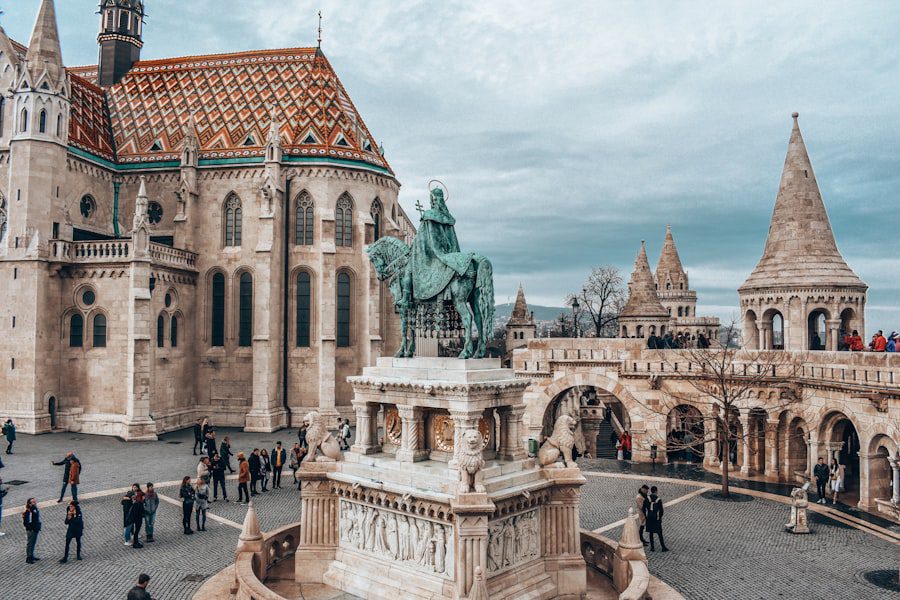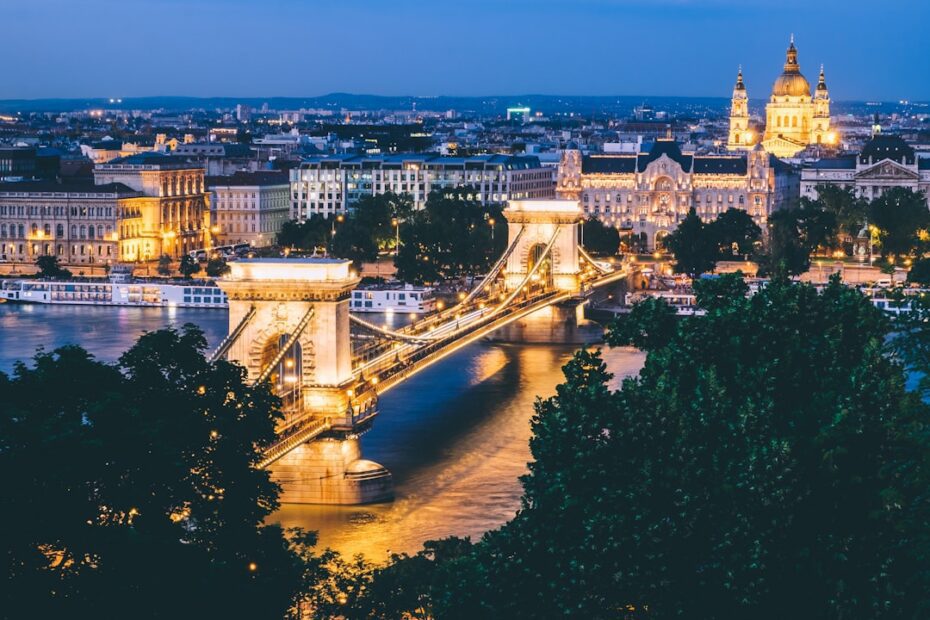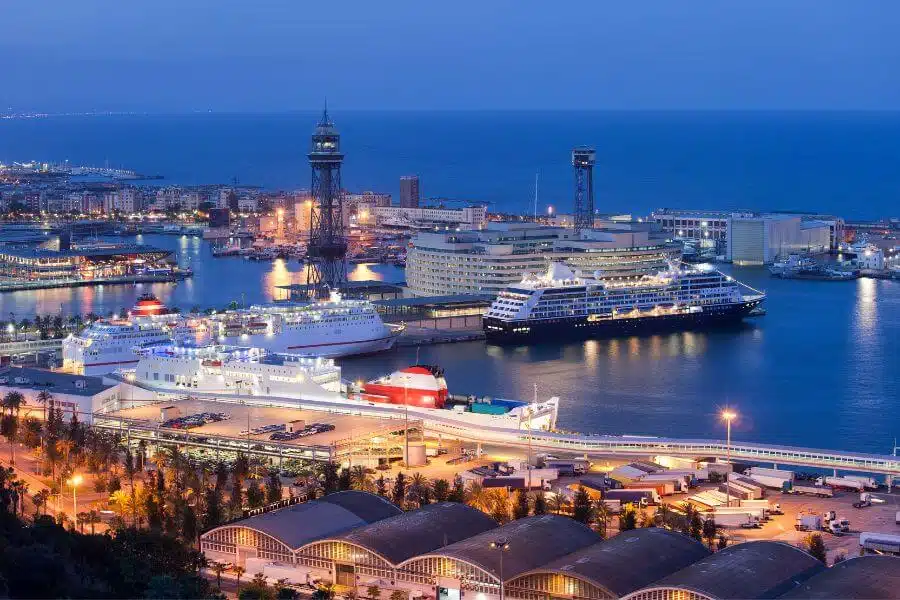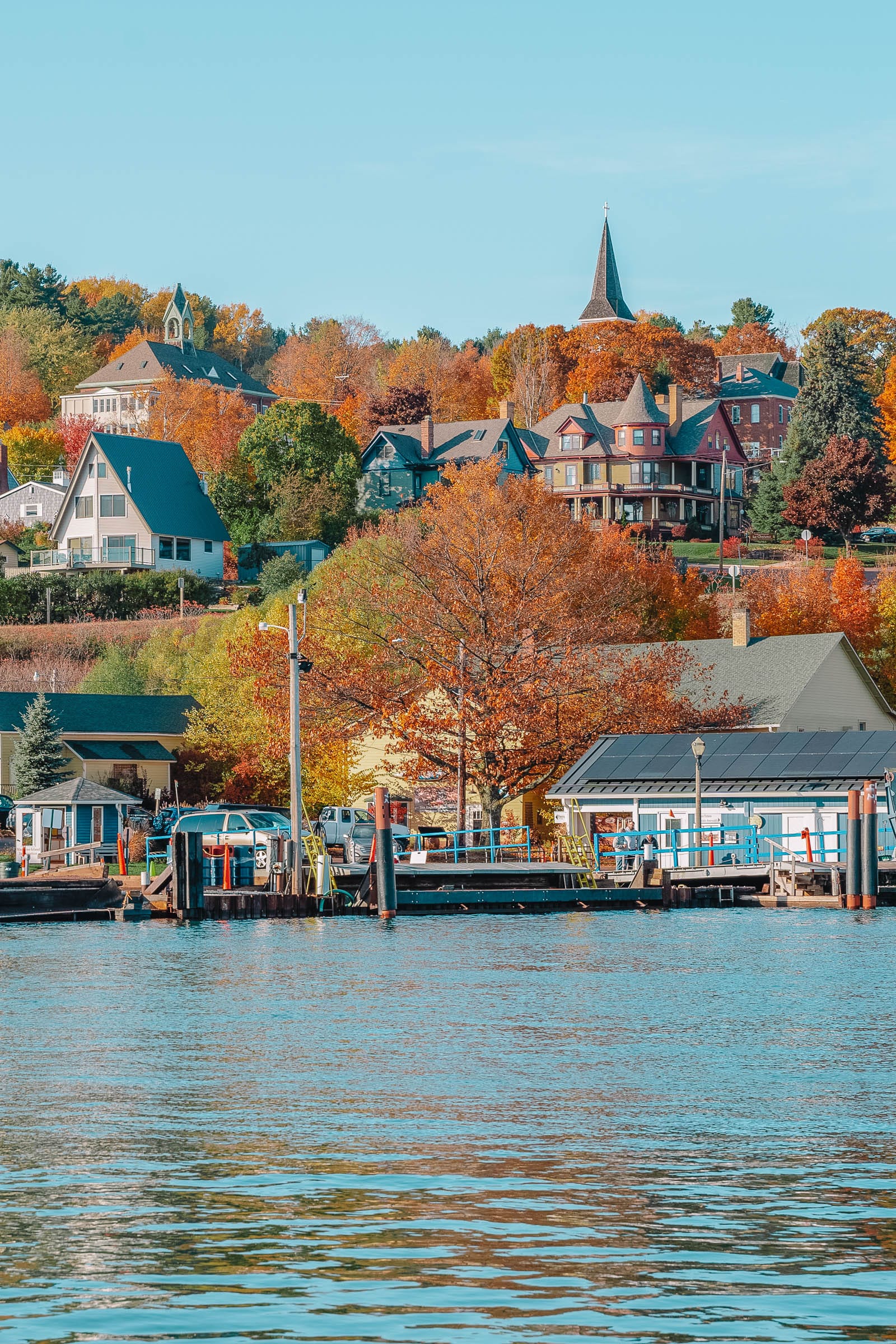Budapest, the capital city of Hungary, is a vibrant and historic destination that offers a wealth of cultural and historical landmarks to explore. With its stunning architecture, rich history, and vibrant arts scene, Budapest has become a popular travel destination for tourists from around the world. From the iconic Hungarian Parliament Building to the charming streets of the Castle Hill District, there is something for everyone in this beautiful city.
Exploring Budapest’s historic and cultural landmarks is not only a way to appreciate the city’s beauty, but also an opportunity to learn about its fascinating history. Budapest has a rich and complex history that dates back centuries, and its landmarks serve as a testament to its past. By visiting these landmarks, travelers can gain a deeper understanding of the city’s culture and heritage.
Key Takeaways
- Castle Hill District offers a glimpse into Budapest’s rich history
- A Danube River Cruise provides stunning views of the city’s landmarks
- The Hungarian Parliament Building is a must-visit for its grandeur and architecture
- Budapest’s thermal baths are a relaxing and rejuvenating experience
- Local restaurants serve delicious traditional Hungarian cuisine
Explore Budapest’s Historic Castle Hill District
One of the must-see areas in Budapest is the Castle Hill District, located on the Buda side of the city. This district is home to some of Budapest’s most iconic landmarks and offers stunning views of the city. The architecture in this area is a mix of Gothic, Baroque, and Renaissance styles, creating a unique and picturesque atmosphere.
One of the main attractions in the Castle Hill District is Buda Castle, which was originally built in the 13th century and has been rebuilt several times throughout history. The castle now houses several museums, including the Hungarian National Gallery and the Budapest History Museum. Visitors can explore the castle grounds and enjoy panoramic views of the city from its terraces.
Another must-see attraction in the Castle Hill District is Fisherman’s Bastion. This neo-Gothic terrace was built in the early 20th century and offers breathtaking views of the Danube River and Pest side of the city. The seven towers of Fisherman’s Bastion represent the seven Hungarian tribes that settled in the Carpathian Basin in the 9th century.
Navigating the hilly terrain of the Castle Hill District can be a bit challenging, but there are several options available to make it easier. Visitors can take a funicular ride up to the top of the hill, or they can choose to walk up the winding streets and staircases. There are also electric golf carts available for rent, which can be a convenient way to explore the area.
Take a Scenic Danube River Cruise
One of the best ways to see Budapest is from the water, and a scenic Danube River cruise offers a unique perspective of the city. Cruising along the Danube allows visitors to take in the stunning architecture and landmarks that line the riverbanks, including the Hungarian Parliament Building, Buda Castle, and the Chain Bridge.
There are several cruise options available in Budapest, ranging from short sightseeing cruises to longer dinner cruises. Some cruises also offer live music or audio guides that provide information about the landmarks along the way. The itineraries vary, but most cruises pass by the major sights in Budapest, allowing passengers to get a comprehensive view of the city.
The best times of day to take a Danube River cruise depend on personal preference and what you want to see. Many people enjoy taking a cruise during sunset, as it offers stunning views of the city bathed in golden light. Others prefer daytime cruises to fully appreciate the architecture and landmarks. Nighttime cruises are also popular, as they allow passengers to see Budapest illuminated against the night sky.
Visit the Iconic Hungarian Parliament Building
| Metrics | Values |
|---|---|
| Number of visitors per year | over 1 million |
| Height of the building | 96 meters |
| Number of rooms | 691 |
| Construction started | 1885 |
| Construction completed | 1904 |
| Architect | Imre Steindl |
| Style | Neo-Gothic |
The Hungarian Parliament Building is one of Budapest’s most iconic landmarks and is a must-visit for any traveler. This stunning Gothic Revival building is located on the banks of the Danube River and is one of the largest parliament buildings in the world.
The Parliament Building has a rich history and is an important symbol of Hungarian democracy. It was completed in 1904 and has been the seat of the Hungarian government ever since. The building’s architecture is truly impressive, with its intricate details, towering spires, and beautiful stained glass windows.
Guided tours of the Parliament Building are available for visitors who want to explore its interior. These tours provide a fascinating glimpse into the history and workings of the Hungarian government. It is recommended to book tickets in advance, as tours can sell out quickly, especially during peak tourist season.
Taking photos of the Parliament Building is a must for any visitor to Budapest. The exterior of the building is particularly photogenic, especially when viewed from across the river. To capture the best photos, it is recommended to visit during the golden hour, which is shortly after sunrise or before sunset. This is when the light is soft and warm, creating a beautiful glow on the building’s facade.
Soak in the Thermal Baths of Budapest
Budapest is famous for its thermal baths, which are an integral part of Hungarian culture and have been enjoyed for centuries. These baths are not only a great way to relax and unwind, but they also offer numerous health benefits due to their mineral-rich waters.
There are several thermal baths to choose from in Budapest, but two of the most popular ones are Gellért and Széchenyi Baths. Gellért Bath is located in a beautiful Art Nouveau building and offers a range of indoor and outdoor pools, as well as saunas and steam rooms. Széchenyi Bath is the largest thermal bath in Europe and features several thermal pools, as well as a variety of wellness services.
When visiting a thermal bath in Budapest, it is important to be aware of the etiquette and rules. Most baths require visitors to wear swimwear, although some may have separate sections for men and women where nudity is allowed. It is also customary to shower before entering the pools and to bring your own towel or rent one from the bath.
To fully enjoy the thermal bath experience, it is recommended to spend a few hours at the bath and take advantage of the various pools and facilities. Many baths also offer additional services, such as massages and treatments, which can be a great way to relax and rejuvenate.
Enjoy a Traditional Hungarian Meal at a Local Restaurant

Hungarian cuisine is known for its hearty and flavorful dishes, and no visit to Budapest is complete without trying some traditional Hungarian food. From goulash to chimney cake, there are plenty of delicious dishes to sample in the city.
Goulash is perhaps the most famous Hungarian dish and is a must-try for any visitor. This hearty soup is made with beef, vegetables, and paprika, which gives it its distinctive flavor. Another popular dish is lángos, which is a deep-fried dough topped with various savory or sweet toppings.
For those with a sweet tooth, chimney cake is a must-try dessert. This spiral-shaped pastry is coated in sugar and can be filled with various fillings, such as Nutella or ice cream. Other popular Hungarian desserts include dobos torte, a layered cake with caramel topping, and somlói galuska, a trifle-like dessert made with sponge cake, chocolate sauce, and whipped cream.
To experience authentic Hungarian cuisine, it is recommended to dine at a local restaurant in Budapest. There are several restaurants in the city that specialize in traditional Hungarian dishes and offer a cozy and welcoming atmosphere. Some popular options include Kéhli Vendéglő, which has been serving traditional Hungarian food since 1887, and Rosenstein Restaurant, which offers a modern twist on classic Hungarian dishes.
Discover the Ruin Bars of Budapest’s Jewish Quarter
Budapest’s Jewish Quarter is known for its vibrant nightlife scene, and one of the highlights of this area are the ruin bars. These unique bars are located in abandoned buildings and courtyards, giving them a distinct and eclectic atmosphere.
Ruin bars first emerged in Budapest in the early 2000s, when entrepreneurs started transforming dilapidated buildings into hip and trendy bars. Today, these bars are popular among locals and tourists alike, offering a mix of live music, art exhibitions, and a laid-back atmosphere.
One of the most famous ruin bars in Budapest is Szimpla Kert, which is often credited with starting the ruin bar trend. This sprawling bar is located in a former factory and features multiple rooms and outdoor spaces. Another popular ruin bar is Instant, which is known for its colorful decor and lively parties.
To fully experience Budapest’s nightlife scene, it is recommended to visit the ruin bars in the Jewish Quarter. These bars offer a unique and alternative atmosphere that is unlike anything else in the city. Whether you’re looking for live music, craft cocktails, or just a place to relax and socialize, the ruin bars of Budapest have something for everyone.
Experience the Artistic Vibes of Budapest’s District VII
Budapest has a thriving arts scene, with numerous galleries, street art, and cultural events taking place throughout the city. One of the best areas to experience this artistic vibe is District VII, also known as the Jewish Quarter.
District VII is home to a vibrant street art scene, with colorful murals adorning the walls of buildings throughout the neighborhood. These murals range from political statements to abstract designs, creating a visually stunning backdrop for exploring the area.
In addition to street art, District VII also boasts several galleries and art spaces that showcase contemporary Hungarian art. Some notable galleries include Godot Institute of Contemporary Art and Faur Zsófi Gallery. These galleries feature a variety of mediums, including painting, sculpture, photography, and installation art.
To fully immerse yourself in Budapest’s art scene, it is recommended to attend a concert or exhibition in District
The neighborhood is known for its live music venues and underground clubs, which offer a diverse range of music genres, from jazz to electronic. There are also several art events and festivals that take place throughout the year, showcasing the best of Budapest’s artistic talent.
Take a Stroll Through Budapest’s Beautiful Parks and Gardens
Budapest is known for its beautiful parks and gardens, which offer a peaceful escape from the bustling city streets. These green spaces are perfect for taking a leisurely stroll, having a picnic, or simply enjoying the natural beauty of the city.
One of the most popular parks in Budapest is City Park, which is located near Heroes’ Square. This expansive park features several attractions, including Vajdahunyad Castle, Széchenyi Thermal Bath, and the Budapest Zoo. Visitors can rent bikes or pedal boats to explore the park, or simply relax on one of the many benches and enjoy the scenery.
Another beautiful green space in Budapest is Margaret Island, which is located in the middle of the Danube River. This island is a popular recreational area for both locals and tourists, offering walking paths, gardens, and even a small zoo. Visitors can rent bikes or electric scooters to explore the island, or simply relax on one of the many grassy areas.
To avoid crowds and find hidden gems in Budapest’s parks and gardens, it is recommended to visit during weekdays or early mornings. These times are typically less crowded and offer a more peaceful experience. It is also a good idea to bring a picnic or snacks to enjoy in the park, as there are often designated areas for picnicking.
Learn About Hungary’s Fascinating History at the National Museum
Hungary has a rich and fascinating history that spans centuries, and one of the best places to learn about it is at the National Museum in Budapest. This museum is dedicated to the history and culture of Hungary and houses a vast collection of artifacts and exhibits.
The National Museum’s exhibits cover a wide range of topics, from prehistoric times to the present day. Highlights include the Crown Jewels, which are on display in the museum’s Treasury, and the Revolution of 1956 exhibit, which provides a detailed account of the Hungarian Revolution against Soviet rule.
In addition to its permanent exhibits, the National Museum also hosts temporary exhibitions that showcase various aspects of Hungarian history and culture. These exhibitions cover a wide range of topics, including art, archaeology, and ethnography.
To make the most of your visit to the National Museum, it is recommended to take a guided tour. These tours provide a deeper understanding of the exhibits and offer insights into Hungary’s history. It is also a good idea to check the museum’s website for any special events or exhibitions that may be taking place during your visit.
Shop for Unique Souvenirs at Budapest’s Eclectic Markets
No trip to Budapest is complete without picking up some unique souvenirs to take home. Luckily, the city is home to several eclectic markets where you can find everything from traditional Hungarian crafts to vintage treasures.
One of the most popular markets in Budapest is the Great Market Hall, which is located near the Liberty Bridge. This beautiful market hall is housed in a stunning Art Nouveau building and offers a wide range of products, including fresh produce, meats, spices, and souvenirs. It is a great place to pick up some paprika, which is a staple ingredient in Hungarian cuisine.
Another market worth visiting is the Ecseri Flea Market, which is located on the outskirts of Budapest. This sprawling market is a treasure trove of vintage items, antiques, and collectibles. Visitors can browse through stalls filled with furniture, artwork, clothing, and more, and haggle with the vendors to find the best deals.
When shopping at Budapest’s markets, it is important to be prepared to bargain. Bargaining is a common practice in Hungarian markets, and vendors often expect customers to negotiate the price. It is also a good idea to bring cash, as many vendors may not accept credit cards.
Budapest is a city that offers a wealth of cultural and historical landmarks to explore. From the stunning architecture of the Castle Hill District to the vibrant nightlife of the Jewish Quarter, there is something for everyone in this beautiful city. Whether you’re interested in history, art, or simply enjoying the local cuisine, Budapest has it all.
By exploring Budapest’s historic and cultural landmarks, visitors can gain a deeper appreciation for the city’s rich history and heritage. From the iconic Hungarian Parliament Building to the thermal baths and ruin bars, there are countless experiences waiting to be discovered in Budapest. So why wait? Plan your trip to Budapest today and immerse yourself in its rich culture and history.
FAQs
What is Budapest?
Budapest is the capital city of Hungary, located in the central part of Europe. It is known for its stunning architecture, rich history, and thermal baths.
What are some popular things to do in Budapest?
Some popular things to do in Budapest include visiting the Buda Castle, exploring the Fisherman’s Bastion, taking a dip in one of the city’s many thermal baths, and strolling along the Danube River.
What are the best thermal baths in Budapest?
Some of the best thermal baths in Budapest include the Széchenyi Thermal Bath, Gellért Thermal Bath, and Rudas Thermal Bath.
What is the Buda Castle?
The Buda Castle is a historical castle complex located on the Buda side of the Danube River. It was first built in the 13th century and has since been rebuilt and expanded upon. Today, it is a UNESCO World Heritage Site and houses several museums and galleries.
What is the Fisherman’s Bastion?
The Fisherman’s Bastion is a neo-Gothic terrace located on the Buda side of the Danube River. It offers stunning views of the city and is a popular spot for tourists to take photos.
What is the best time to visit Budapest?
The best time to visit Budapest is during the spring (March to May) or fall (September to November) when the weather is mild and the crowds are smaller. However, the city is beautiful year-round and each season offers its own unique charm.
- Unveiling the Truth: Weightlifting for Women and Strength Building - November 4, 2024
- The Ultimate Guide to Weightlifting for Beginners - November 4, 2024
- Boost Your Mood and Ease Anxiety with Cardio Exercises - November 4, 2024




